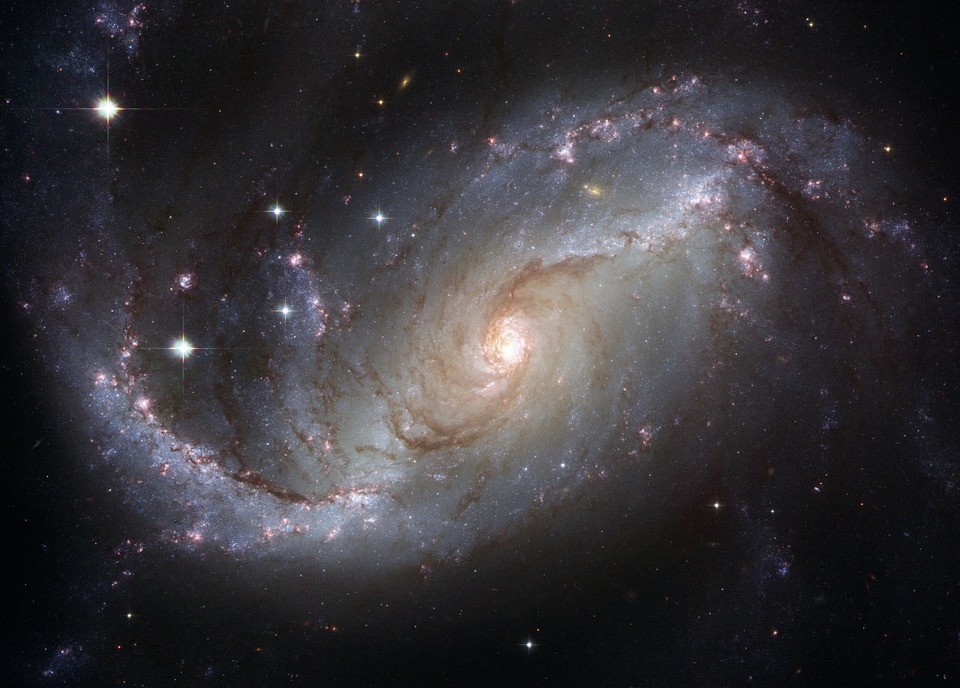NASA’s Hubble Space Telescope has provided some of the most fascinating images taken from deep space. Now it seems that it has captured another phenomenon happening within the cosmos as it snapped a photo of a whirlpool galaxy.
Express reports that the Hubble took a photo of the whirlpool galaxy referred to as M51 which is located 23 million light-years away. This spiraling galaxy is next to a yellowish galaxy referred to as NGC 5195 and the two galaxies seem to be engaged in a “tug-of-war” according to the report. It may look as if the smaller galaxy is pulling on the arm of the spiral galaxy at first but upon closer inspection, the two galaxies have some space between them.
Nicknamed after its shape of resembling a whirlpool, M51 is also “home to young stars, and its yellow core is where older stars reside,” said NASA.
“Many spiral galaxies possess numerous, loosely shaped arms, which make their spiral structure less pronounced. These arms are star-formation factories, compressing hydrogen gas and creating clusters of new stars.”
As for the smaller galaxy, NGC 5195, the agency revealed that it has been passing by M51 for millions of years. “As NGC 5195 drifts by, its gravitational muscle pumps up waves within the Whirlpool’s pancake-shaped disk,” said NASA. “The waves are like ripples in a pond generated when a rock is thrown into the water.”
This year marks the 30th anniversary of the Hubble Space Telescope since its launch back in 1990. One of Hubble’s most famous photos is of the Pillars of Creation in the Eagle Nebula that was snapped back in 1995. NASA released a photo capturing the phenomenon from a newer angle, sprinkled with many baby stars all around it. “The ghostly outlines of the pillars seem much more delicate, and are silhouetted against an eerie, blue haze,” said the agency in a statement.
Along with revisiting the photo that the Hubble telescope is known for, NASA has launched a site where people can see the image the telescope took on their birthdays. The images will vary, from the Swan nebula to a whirlpool galaxy or even to a field full of stars.



 The brightest object in the universe is a black hole that eats a star a day
The brightest object in the universe is a black hole that eats a star a day  If life exists on Jupiter’s moon Europa, scientists might soon be able to detect it
If life exists on Jupiter’s moon Europa, scientists might soon be able to detect it  Why is the universe ripping itself apart? A new study of exploding stars shows dark energy may be more complicated than we thought
Why is the universe ripping itself apart? A new study of exploding stars shows dark energy may be more complicated than we thought  Our survey of the sky is uncovering the secrets of how planets are born
Our survey of the sky is uncovering the secrets of how planets are born  Spacesuits need a major upgrade for the next phase of exploration
Spacesuits need a major upgrade for the next phase of exploration  Orbital resonance − the striking gravitational dance done by planets with aligning orbits
Orbital resonance − the striking gravitational dance done by planets with aligning orbits  The mystery of consciousness shows there may be a limit to what science alone can achieve
The mystery of consciousness shows there may be a limit to what science alone can achieve  Archeoastronomy uses the rare times and places of previous total solar eclipses to help us measure history
Archeoastronomy uses the rare times and places of previous total solar eclipses to help us measure history  Dark energy is one of the biggest puzzles in science and we're now a step closer to understanding it
Dark energy is one of the biggest puzzles in science and we're now a step closer to understanding it  Customizing mRNA is easy, and that's what makes it the next frontier for personalized medicine − a molecular biologist explains
Customizing mRNA is easy, and that's what makes it the next frontier for personalized medicine − a molecular biologist explains  The brain is the most complicated object in the universe. This is the story of scientists’ quest to decode it – and read people’s minds
The brain is the most complicated object in the universe. This is the story of scientists’ quest to decode it – and read people’s minds  Genetic diseases: How scientists are working to make DNA repair (almost) a piece of cake
Genetic diseases: How scientists are working to make DNA repair (almost) a piece of cake  Why some people don't trust science – and how to change their minds
Why some people don't trust science – and how to change their minds  Why now is the time to address humanity’s impact on the moon
Why now is the time to address humanity’s impact on the moon 































